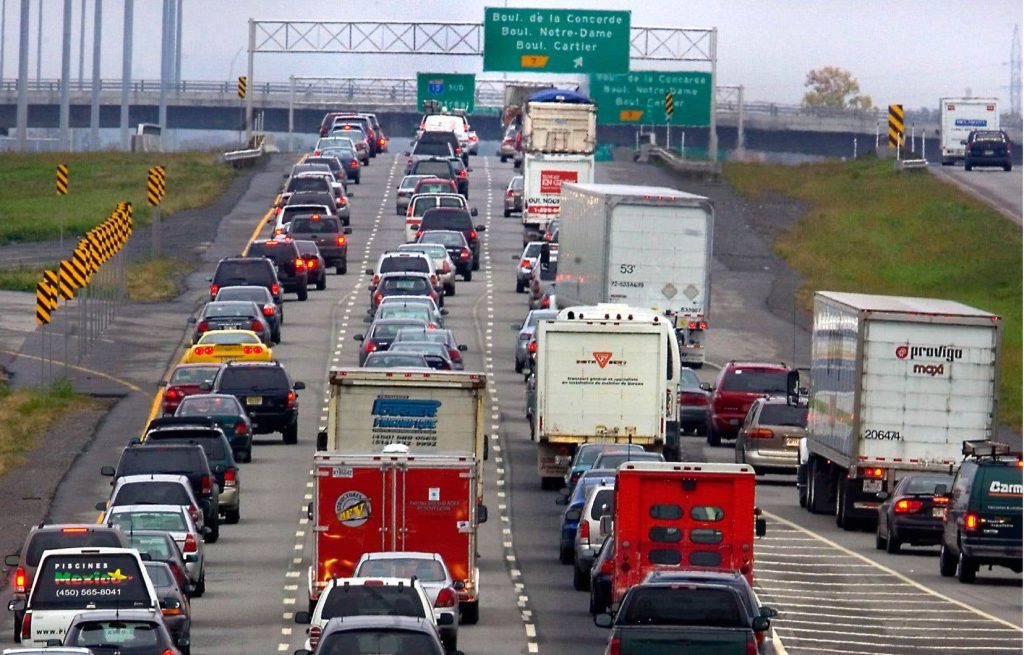
The lack of frequency of buses and commuter trains, the sometimes high fares and the length of journeys are obstacles to the use of public transport by residents of Laval and its northern suburbs, for whom the car is sometimes the bright path.
To get to work in Dollard-des-Ormeaux by public transit, Raba Hatcheloff, who lives in Sainte-Dorothy, west of Laval, must first take a bus from the Société de Transport de Laval, which is a long journey for him. East of the Bois-Franc train station in the Montreal borough of Saint-Laurent. From there, he boarded another bus, this time operated by the Société de Transport de Montréal, to his workplace on the west side of the island of Montreal.
“The journey takes an hour and 10 minutes when the conditions are right,” the father of the family suggested in an interview. to have on wednesday By car, he takes Highway 13 to work in less than 20 minutes. “I take public transport when it is necessary, for example when my wife takes a car,” said Mr. Hatcheloff explained, noting that the couple only had one car. “But at this point, we’re always thinking of buying another one. »
Further north, in the municipality of L’Assomption, Stephanie Mathieu long ago gave up on the idea of working by public transport. Every day, she takes her car no later than 6 a.m. to the construction site of a major real estate development in Brossard at 3:50 a.m., where she works.
Her two children have for a time opted for long bus and metro trips to get to their classes in Longueuil and Montreal, but the lack of frequency and unreliability of the service often causes them to be late. free Despite the volatility of traffic congestion, Ms. Matthew said.
She also noted that the $184 she would pay her children each month would not be financially competitive with a car if they continued to commute to their lessons by public transport.
“The north coast wants to continue the development of the automobile model”, so decides Pierre Barrio, an expert in transport planning and a lecturer at the University of Montreal. To reverse this trend, this calls for a significant improvement in service offer and public transit frequency in this sector with a growing population.
waiting for REM
Raba Hatcheloff, for his part, is optimistic that the Metropolitan Express Network (REM) has led the way. Closure of Sainte-Dorothy and Île-Bigras commuter train stations, Laval “solves the problem” by providing efficient public transportation to residents on the west side of the island. Entry into light rail service on the axis of the Deux-Montagnes line is not planned before the end of 2024.
Meanwhile, Stéphane Bracher, who lives in Deux-Montagnes, has to take his ordeal with patience. Due to ongoing work on the Deux-Montagnes rail line, he has been using bus alternatives for years to get to Montreal’s Côte-Vertou metro station.
“The bus is very comfortable, but we also get stuck in traffic” on parts of the route where reserved lanes are not installed, Mr Bratcher noted. The latter also condemned the removal of the terminals that allowed the purchase of tickets on the site of the Deux-Montagnes train station. You will now need to go to a convenience store in the municipality of Laurentides to get your tickets, the transport company confirms via email to exo.
“The easiest way is the car”, but “the traffic is hellish”, said Mr Bratcher, who now alternates between driving to work and taking public transport, when working from home is impossible.
Less frequent trains
In Saint-Jérôme, all residents benefit from free local bus routes from October 1, 2021. However, the measure will only apply to residents aged 65 and above from November 1. According to many residents of this city of more than 80,000 residents, the frequency of bus travel is insufficient.
Marc-Olivier Neveu, who tried his luck at Saint-Jerome town hall last year, noted that “we have situations where there are buses every hour in some neighborhoods.” “We see that public transport services are not enough to meet the needs of the population. »
Due to the sharp drop in traffic with the advent of the pandemic COVID-19, transport organization EXO has withdrawn fixed scheduled departure times on its various commuter rail lines in March 2020 to reduce its operating costs. In the northern crown, two exits were cut on the Saint-Jerome railway line and one in Mascouche. The second is back in August 2021 “all where she left before the pandemic,” Exo confirms. But reduced service remains in place on the Saint-Jerome line. However, the transport company confirms that the rail line will maintain its goal of returning the withdrawn departures to schedule when “traffic warrants it”.
However, “Typically, when we reduce service, we lose traffic. It’s a vicious circle we don’t want to get out of,” says Sarah V. Doyon, executive director of Trajectoire Quebec, who is calling for better funding for public transportation in the region. “We need to fix it quickly because it encourages people to choose the car instead of the train,” gripes Marc-Olivier Neveu.





More Stories
Sportswear: Lolle acquires Louis Garneau Sports
REM is still innovative enough to foot the bill
A trip to the restaurant with no regrets for these customers